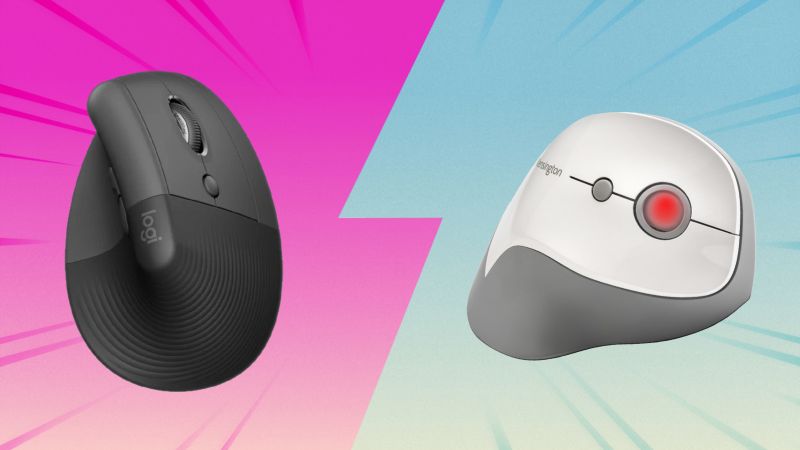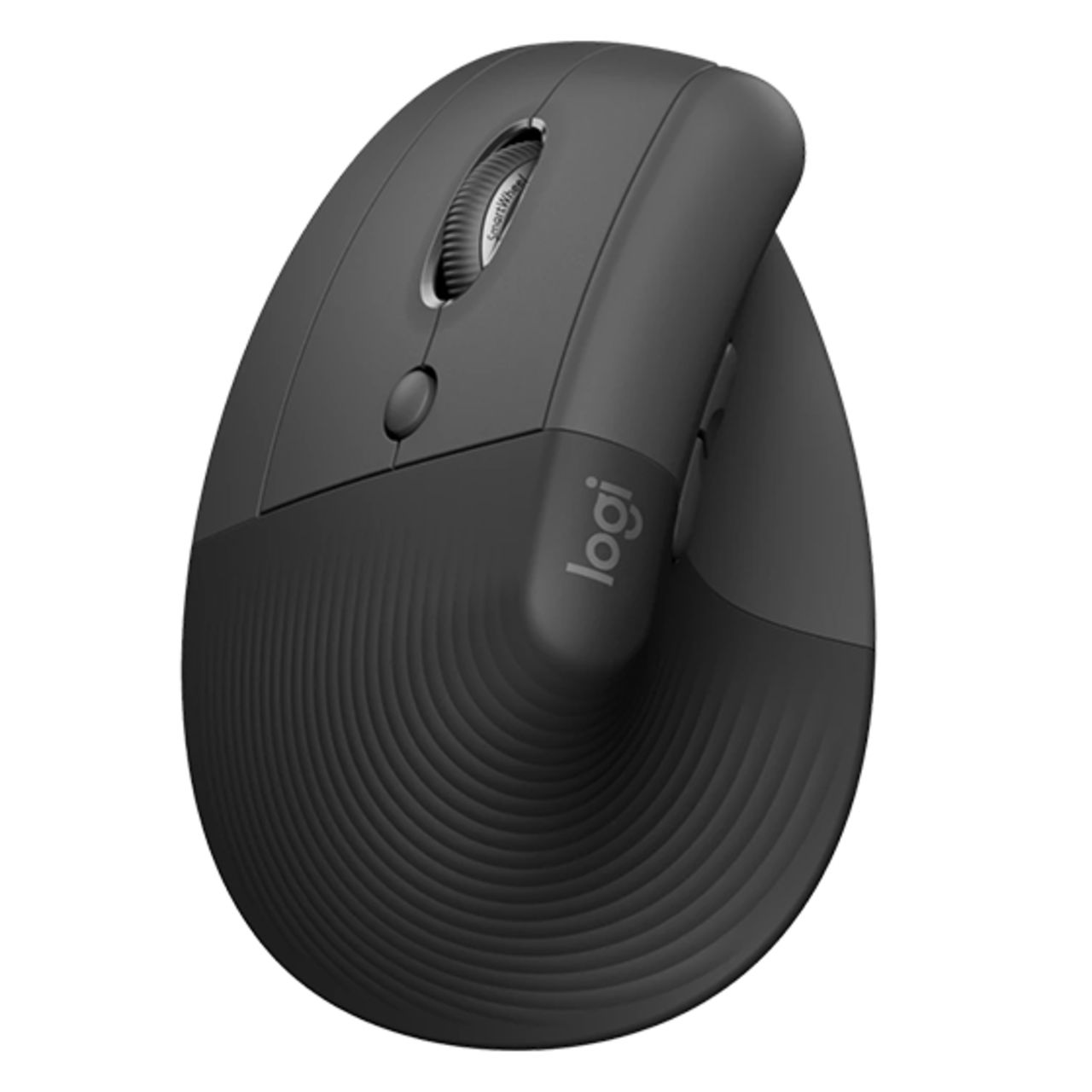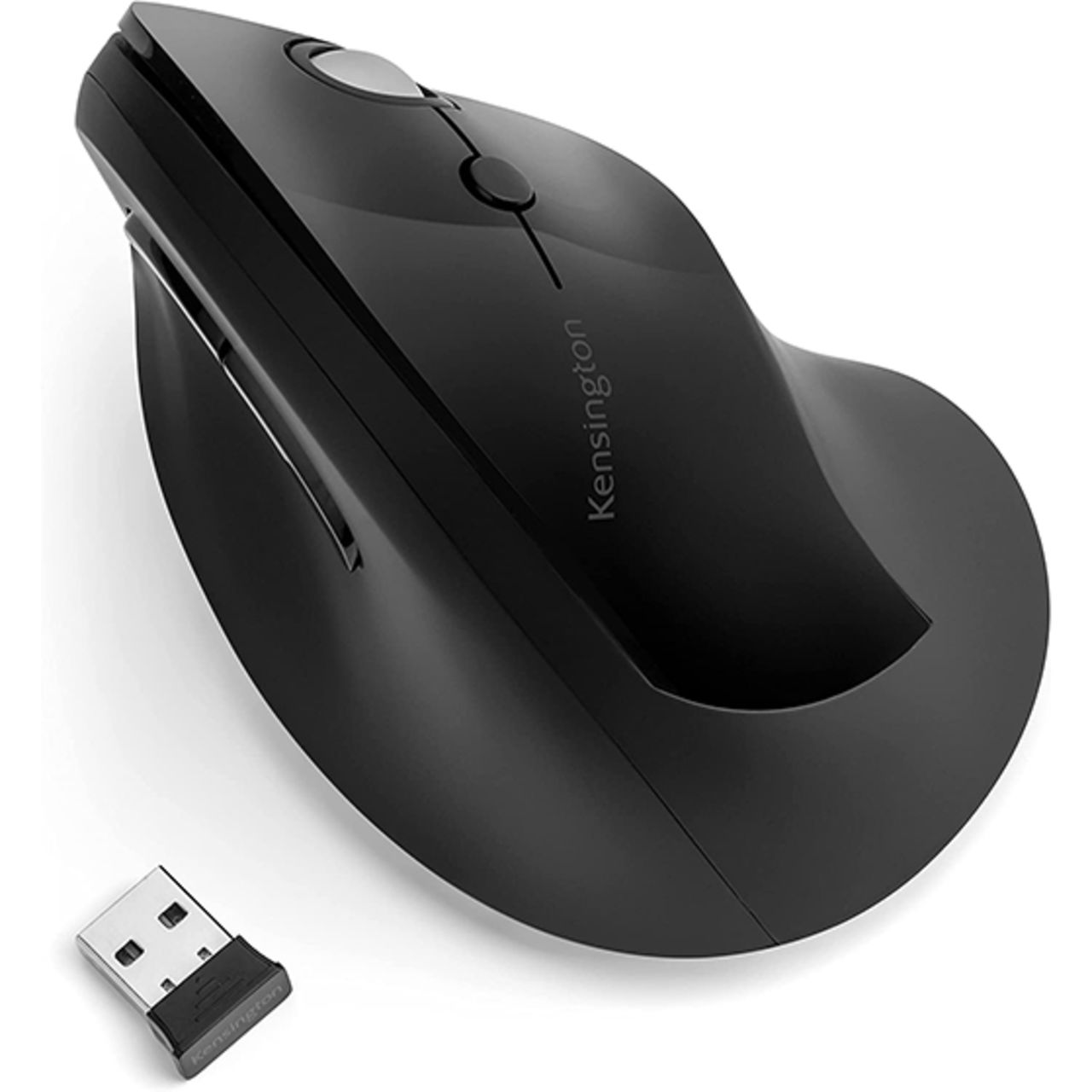This article is part of our series Battle of the Brands, in which we compare category-leading products to their counterparts to determine which are actually worth your money.
Ergonomic mice have gained popularity thanks to their health benefits. By promoting proper wrist alignment and reducing strain, these mice can help prevent issues like carpal tunnel syndrome and tendinitis. Moreover, ergonomic mice can potentially boost productivity by reducing discomfort and fatigue during long hours of computer use.
We decided to test two of the most popular ergonomic “vertical” mice (Mouses? Mouse devices?): the Logitech Lift and the Kensington Pro Fit Ergo Vertical Wireless Mouse. These two mice (let’s say that) both say their design will improve comfort and, thus, productivity. They both feature a design that places your hand in a more natural position, like a handshake. Whether this increases comfort or not is another story.
| Customizable buttons |
6 |
5 |
|---|---|---|
| Connectivity |
Bluetooth & Logi Bolt |
2.4GHz USB Receiver |
| Multi-device support |
Yes (up to 3 devices) |
No |
| Battery life |
Up to 24 months |
Not specified |
| Battery type |
1 AA (included) |
1 AA (included) |
| Available colors |
White, graphite, pink |
Not specified |
| Left/right handed options |
Yes |
No |
| Dimensions and weight |
Height: 2.8 in (71 mm) |
Width: 3 in (76 mm) |
| Price |
$70 |
$40 |
Design and Comfort
First up, the Kensington. It has a textured grip that felt properly grippy but didn’t make my hands sweat with a rubberized finish, so that was nice. The clicks of both the right and left buttons are subdued but don’t feel squishy. The middle button is fine, but some users may find it too small to use effectively. The backward and forward buttons, arranged on the side of the mouse, were just a little off for my thumb to rest comfortably on them. People with larger hands may have a better time of it.
I liked that the Kensington has a little “lip” on the side for the pinky finger. It adds a ton of comfort that I didn’t realize I was missing. There’s also a bit of an overhang on the left side of the mouse that cradles your thumb and makes it easy to grab and move around. It felt great.
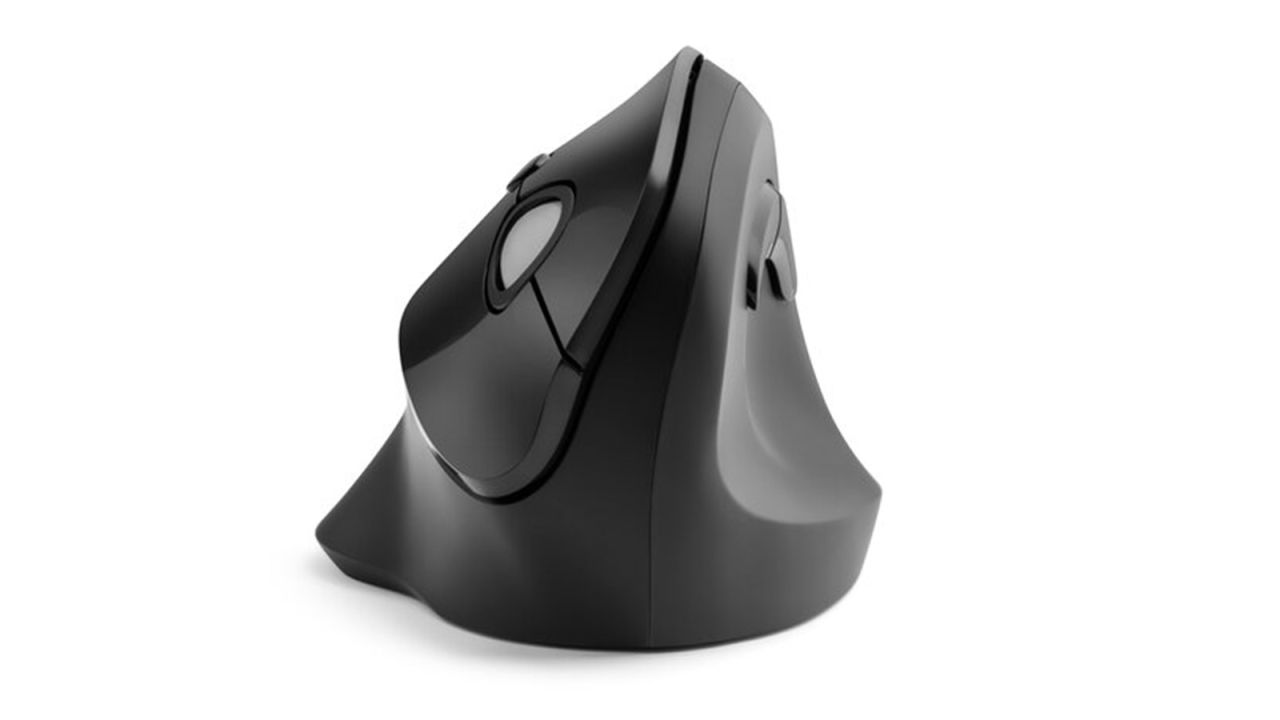
On the other hand (heh), the Logitech Lift offers neither of these little design touches. It feels like you’re trying to grab a small pyramid, which wasn’t as conducive to my hands. There’s no pinky lift or anything for your thumb to tuck under and I had to grip it rather tightly to lift it. And yes, I know you’re not supposed to lift your mouse, but we all do it when we hit the edge of the desk and need to reposition it. I was constantly reminded of this weird feeling when using the Logitech mouse.
I also wasn’t as pleased with the Logitech mouse’s material. It felt less grippy and yet still made my fingers feel a little sweaty. However, the scroll wheel (which doubles as a middle mouse button on both mice) felt more responsive than the Kensington’s.
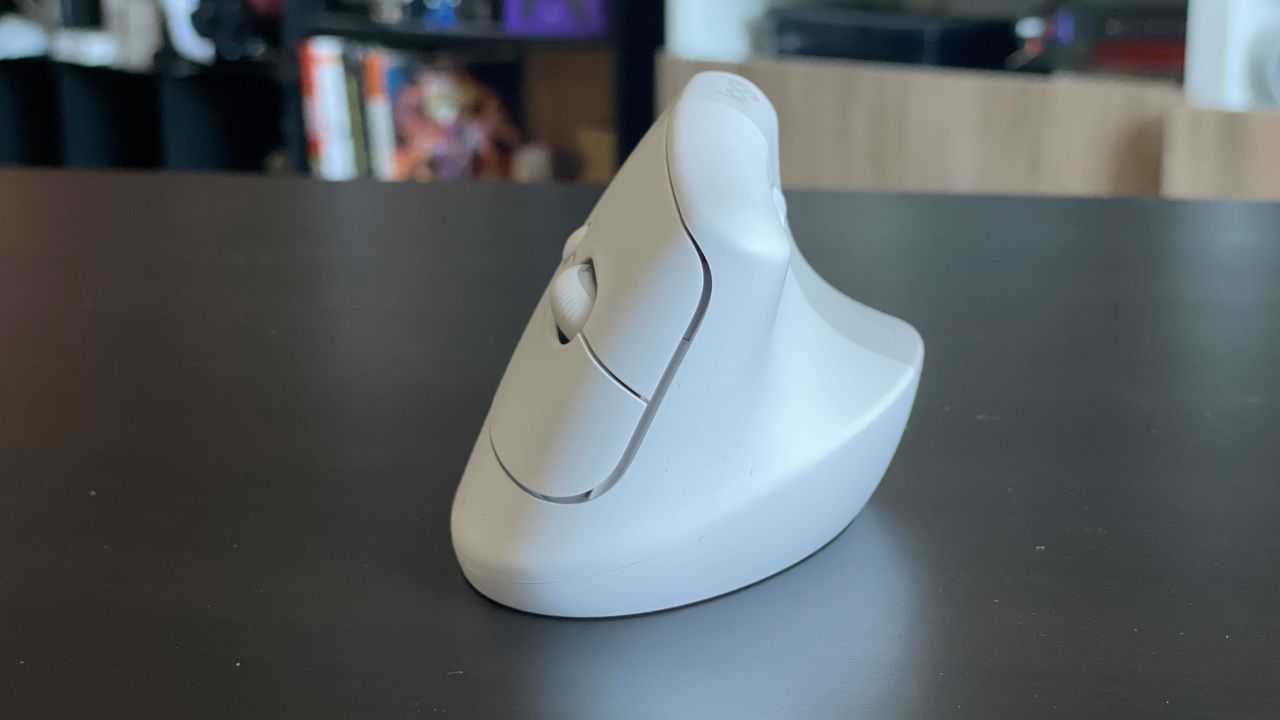
Both mice have six programmable buttons, which you can customize with each company’s software (see below).
The Logitech comes in right- and left-handed designs, while the Kensington omits southpaws. And, the Logitech comes in black and white while you can get the Kensington in black, white or pink.
TL;DR: Comfort is subjective, and everyone’s hands are different. But for overall comfort and design thoughtfulness, Kensington wins here. It just felt better in my hand. The lack of left-handed options, though, is a major ding.
Customization and Software
As mentioned, both mice offer six buttons, most of which can be programmed according to users’ needs.
KensingtonWorks looks a bit barebones compared to Logi+ Options, the offering from Logitech, but all the functionality is there. You can program the Kensington’s buttons and adjust the pointer and scrolling speed. Most programmability comes in the middle mouse button since most people don’t want to mess with the left-click-right-click paradigm (although you can if you want to). The options for the middle button are too numerous to list here, but they cover all the broad categories: basic mouse and keyboard shortcuts, video conferencing shortcuts, media control, editing shortcuts like cut, copy, paste, and undo, and window management.
On the mac version of the software, you can also access Mission Control functions for arranging your desktops. I don’t have a Windows machine to test it on, but it appears the software works almost identically. You can also customize the software on a per-application basis, so you can have the middle button perform a drag function in Photoshop and “select all” when you’re working in Microsoft Word.
The Kensington mouse’s sixth button, behind the scroll wheel, controls the speed adjustment of the scroll wheel and can’t be programmed.
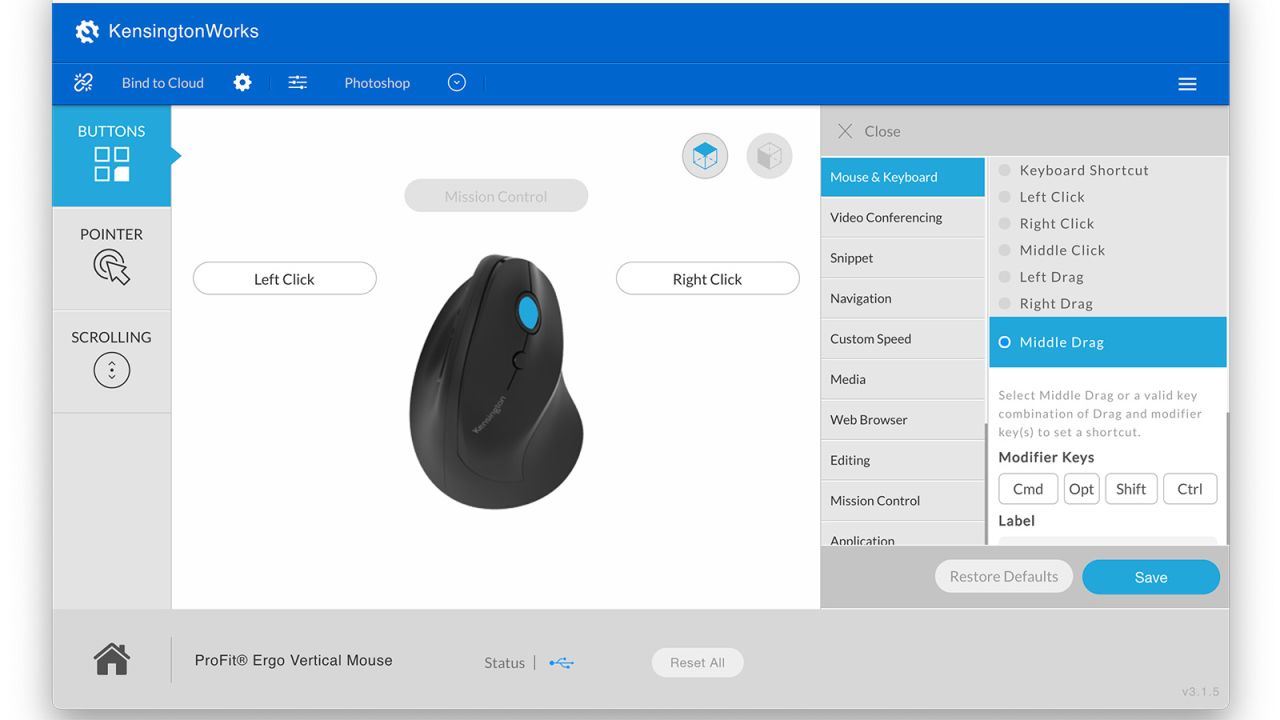
The Logitech software is even more customizable. Every button, including the sixth one behind the scroll wheel, can be programmed. And the Logi+ Options app comes with pre-loaded customizations for common apps like Word, Photoshop, Final Cut Pro, Powerpoint, etc. Its nicer interface makes it easy to find the customization you want via friendly graphics. Overall, while both apps do the same thing — customizing your mouse — Logitech’s offering is easier to use and gives slightly more options.
Both apps allow for backing up settings to the cloud, and both allow you to set up more than one device.
TL;DR: Logitech wins in this category. Its software is easier to use and slightly more robust.
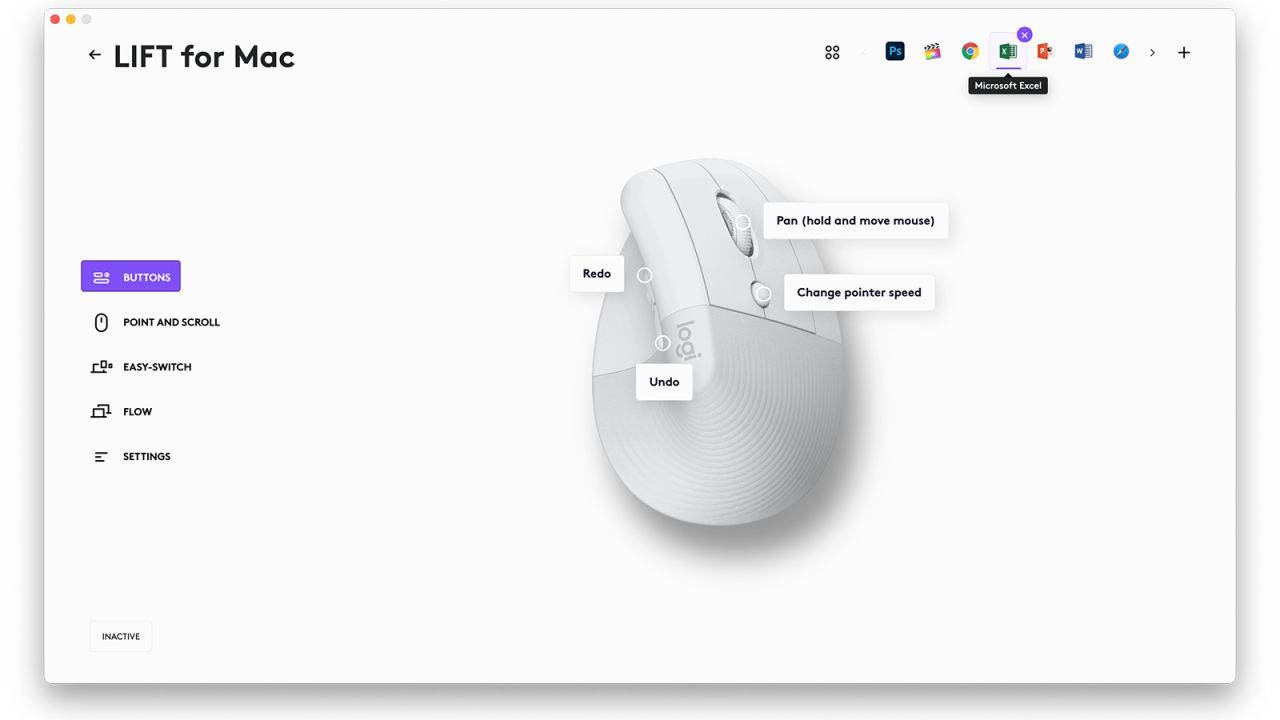
Both mice are wireless, but they take very different approaches. The Kensington relies on 2.4 GHz WiFi and requires a small USB receiver that plugs into your computer. If you don’t have a spare USB port, well, you’re out of luck. And if you lose that receiver, they are happy to sell you a new one for $16 or so.
The Logitech uses Bluetooth and Logi Bolt (which is the same USB receiver tech as the Kensington). You can use whichever you choose, giving you more flexibility if you prefer Bluetooth.
The Logitech Lift also has a clear advantage regarding multi-device support. Using the Logi Options+ software, users can connect to up to three devices — like a desktop, laptop, and tablet — simultaneously, making it easy to switch between computers and tablets throughout the workday. Logitech even has something called Flow, which allows you to move your mouse cursor between two or more devices next to each other and even copy and paste content from one device to another. You might want to use this when you have a laptop or a tablet to the side of your desktop and work on both simultaneously.
The Kensington mouse does not offer multi-device support.
TL;DR: Logitech is better for connectivity. You have more options, and the Flow functionality could be useful.
Both mice run off a single AA battery, which is great since they’re so common. The Kensington says it will last up to a year on one battery, while Logitech boasts two years. I wasn’t able to test this for obvious reasons.
TL;DR: It’s a wash. While the Logitech claims two years to the Kensington’s one year, it’s an AA battery. You have a dozen of them rattling around your junk drawer already.
The Kensington Pro Fit Ergo Vertical Wireless Mouse currently costs $40, making it an attractive option for budget-conscious users. The Logitech Lift is more expensive, at $70, but its additional features, like multi-device support and left/right-handed options, may justify the higher cost.
The Kensington Pro Fit Ergo Vertical Wireless Mouse and the Logitech Lift are solid ergonomic mouse options for those looking to alleviate wrist and arm strain. But I’d have to recommend the Logitech, even though it doesn’t feel as good (to me) as the Kensington. The lack of a left-handed option and reliance on a USB dongle to connect could make Kensington a non-starter for many people. The extra cost of the Logitech is justified by its extra features and greater flexibility.

